Last month’s round of tips, advice, and more from non-OPB interviews was such a hit that we’re giving it another go this month. I’ve combed the internet far and wide to find even more useful picture book info from industry folks. See what you think!
I’ll see you back here next week (January 1st) for Only Picture Books’ 23 Favorites of 2023.
Winsome Bingham, Editor at Reycraft Books
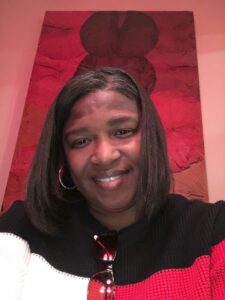 I do not agree with you “that there are some elements good stories need, like conflict and tension, that keeps the story moving and the reader reading.” I see this all the time in craft books and I disagree. Many cultures do not tell stories this way. Yet, they tell amazingly good stories. We cannot dismiss stories because it doesn’t follow the standards of whiteness. We have to respect cultures and embrace those cultures and their style of storytelling. This is why we are at the point in publishing where there’s a need and cry for “diverse books and stories.” Authentic storytelling is not one way, it isn’t a cookie-cutter narrative. Authentic storytelling is how that culture tells stories and what stories they deem necessary to be told. And I would hope that others would want to experience how different cultures document their stories.
I do not agree with you “that there are some elements good stories need, like conflict and tension, that keeps the story moving and the reader reading.” I see this all the time in craft books and I disagree. Many cultures do not tell stories this way. Yet, they tell amazingly good stories. We cannot dismiss stories because it doesn’t follow the standards of whiteness. We have to respect cultures and embrace those cultures and their style of storytelling. This is why we are at the point in publishing where there’s a need and cry for “diverse books and stories.” Authentic storytelling is not one way, it isn’t a cookie-cutter narrative. Authentic storytelling is how that culture tells stories and what stories they deem necessary to be told. And I would hope that others would want to experience how different cultures document their stories.
***
I love rhythm in writing. Rhyme is rhythm, but rhythm is not necessarily rhyme. I love to use onomatopoeia to break up the monotony of the text. So, my books tend to have a lot of poetic devices. I am all about musicality and cadence. The use of consonance, assonance, and alliteration adds a boppity-bluesy feel to the text. When I was teaching, I learned the books that went over well with my students were the ones that were rhythmic in nature.
Brenda Bowen, Literary Agent at The Book Group
 The takeaway message to self-published authors is to spend a lot of time and thought putting your book together. The Churchmans [a couple who self-published] looked at formats and chose the largest trim size that could fit comfortably on standard shelves. They printed the book on 100lb paper—heavier stock than most traditional publishers can use—and also used extra heavy board for the hardcover case. They hired an editor to help them shape the text. And they mounted a Kickstarter campaign to fund their upfront costs. They took a lot of care.
The takeaway message to self-published authors is to spend a lot of time and thought putting your book together. The Churchmans [a couple who self-published] looked at formats and chose the largest trim size that could fit comfortably on standard shelves. They printed the book on 100lb paper—heavier stock than most traditional publishers can use—and also used extra heavy board for the hardcover case. They hired an editor to help them shape the text. And they mounted a Kickstarter campaign to fund their upfront costs. They took a lot of care.
Once the book was published, they truly believed in it and felt others would, too. That’s the moment to take the book to booksellers and librarians and teachers—when you have something that stands out in the marketplace and that’s backed by the courage of your own convictions.
Stephen Fraser, literary agent at The Jennifer De Chiara Literary Agency
[I like] A writer who stays in touch every six weeks or so. Agents aren’t paid until they sell a book, so clients need to be respectful and appreciative of an agent’s time. I don’t mind chatting on the phone or communicating via e‑mail. I don’t generally meet with clients who may be in Manhattan on vacation or for other business – I just don’t have the time. If there is some event at a publisher which involves my client, that, of course, is different. And you know every writer is different. Some work very independently; some need more hand-holding. And that is okay.***
Because I was previously an editor, that is always my instinct: to see the potential in a manuscript and figure out how to bring it to full flower. I am glad to toss ideas around with a client, read a partial, or give feedback on a full manuscript. Not all agents work that way. I won’t let a manuscript go out until I feel it is right. I am especially fussy with picture books.
Michelle Frey, Executive Editor at Knopf Children’s
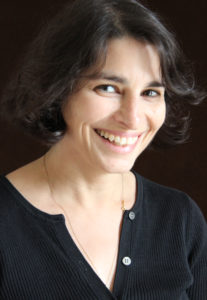 I’m most likely to pass on rhyming picture books or picture books that cover ground that’s well-trod (alphabet books, goodnight books). That’s both personal taste and a business decision. For example, it’s extremely hard to pull off rhyme. And in a market flooded with “goodnight” books, it can be hard to make another one stand out in the crowd. Also, just as a matter of personal taste, I don’t like treacly-sweet “I love you” books.
I’m most likely to pass on rhyming picture books or picture books that cover ground that’s well-trod (alphabet books, goodnight books). That’s both personal taste and a business decision. For example, it’s extremely hard to pull off rhyme. And in a market flooded with “goodnight” books, it can be hard to make another one stand out in the crowd. Also, just as a matter of personal taste, I don’t like treacly-sweet “I love you” books.
***
One of the most common mistakes in picture book writing is saying too much. The writer does not carry all the weight—there will be a talented illustrator involved who will be bringing your text to life and interpreting it in their own way. This means that robust physical descriptions, for example, are usually repetitive. And much about emotion can be communicated visually as well. Picture books are like poetry—each word matters, and needs to be there for a reason.
Wendi Gu, Agent at Sanford J. Greenburger Associates
I tried writing something myself the other day and it was SO hard. Everything I put on the page felt stupid and I had every conviction that no one else would ever be interested in reading it. I gave up too quickly and started answering my work e‑mails instead. I’ll go back eventually—probably, maybe.
Writers, don’t take for granted that you are already putting your dreams into action by just getting something down on the page. Do you delight in the writing process? Good. Then you are already, in my book, living a successful life.
Alyssa Eisner Henkin, Birch Path Literary
 First, when I started in children’s publishing, we were just beginning to see books like Harry Potter, A Series of Unfortunate Events, and The Spiderwick Chronicles become feature films, and it really ushered in a golden age of big blockbusters and bestsellers for kids’ books. The idea of co-viewing and getting parents and kids to read and watch content together has really grown in the last twenty years. Second, we’ve seen graphic novels and illustrated fiction for middle grade and even YA become a much bigger part of the book landscape. And third, the era of power librarians and influencers building buzz about more literary books on social media has really taken shape over the last decade. It used to be books were either commercial/high concept or literary/librarian-driven, and now many of the popular books are both commercial and literary.
First, when I started in children’s publishing, we were just beginning to see books like Harry Potter, A Series of Unfortunate Events, and The Spiderwick Chronicles become feature films, and it really ushered in a golden age of big blockbusters and bestsellers for kids’ books. The idea of co-viewing and getting parents and kids to read and watch content together has really grown in the last twenty years. Second, we’ve seen graphic novels and illustrated fiction for middle grade and even YA become a much bigger part of the book landscape. And third, the era of power librarians and influencers building buzz about more literary books on social media has really taken shape over the last decade. It used to be books were either commercial/high concept or literary/librarian-driven, and now many of the popular books are both commercial and literary.
***
I think children’s publishing will continue to want to publish more diverse voices and more little-heard point of views so the cannon of kidlit reflects the diversity of our world. I also think, given how many kids are using technology from the time they can hold an iPhone, the industry will continue to try new formats and initiatives to hook kids on reading, since we are competing with video games and apps even in the preschool age group.
Liz Kemp, Editor at Orca Book Publishers
Editing picture and board books is not so much about changing words as it is project management. There is, of course, plenty of word changing, but a lot of my job is managing expectations.
An author pitches me a text that they have been writing and visualizing for some time (potentially, years!); I read this text and it inspires something in me to make me want to sign it and publish it as an Orca book; the Art Director reads it and has her own vision of what these words look like on the page and then hires an illustrator whose job it is to create a visual concept inspired by the story. We’ve gone from one person with an idea to four people with four ideas, and my job is to make sure that at the end of the day what we’ve created together is respectful of all of these separate visions.
***
Picture books are a huge influence on a child in their foundational years, I’m very mindful of what message each book we publish is imprinting on soft squishy brains. I love to see dark humour in submissions, a reminder to children that there is also light where there is darkness.
And since I have this platform, what I really REALLY don’t like to see in submissions is name calling. I think it’s unnecessary and I don’t want my little readers to ever think it’s okay.
Jennifer Mattson, Agent at Andrea Brown Literary Agency
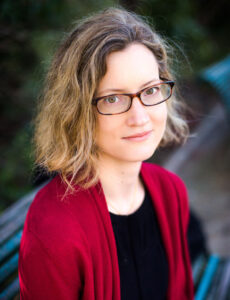 People in children’s book publishing are often drawn to this industry, at least in part, because it offers a chance to do something meaningful and positive in the world. I think it’s safe to say that with the start of the Trump administration, many acquiring editors feel uniquely positioned to help counter some of the policies or currents of opinion—about immigrants, about diversity, about LGBTQ issues, about science, and, of course, much more—by acquiring manuscripts that foster a different narrative. There was already a lot of love among editors for topics that develop empathy among young readers in all sorts of way—i.e., Doug Kuntz and
People in children’s book publishing are often drawn to this industry, at least in part, because it offers a chance to do something meaningful and positive in the world. I think it’s safe to say that with the start of the Trump administration, many acquiring editors feel uniquely positioned to help counter some of the policies or currents of opinion—about immigrants, about diversity, about LGBTQ issues, about science, and, of course, much more—by acquiring manuscripts that foster a different narrative. There was already a lot of love among editors for topics that develop empathy among young readers in all sorts of way—i.e., Doug Kuntz and  Amy Shrode’s The Lost and Found Cat, focused on a refugee family; Selina Alko’s The Case for Loving: The Fight for Interracial Marriage; or your own Over the River & Through the Wood, which features an extended family at Thanksgiving that includes a gay and biracial couple. But there’s (if possible) an intensified level of passion behind publishing these kinds of books now. And, across the board (fiction and nonfiction, picture books and older fiction), there is an increased awareness of the need for more #ownvoices publishing, to use the hashtag shorthand for stories about diverse characters written by authors from that same diverse group.
Amy Shrode’s The Lost and Found Cat, focused on a refugee family; Selina Alko’s The Case for Loving: The Fight for Interracial Marriage; or your own Over the River & Through the Wood, which features an extended family at Thanksgiving that includes a gay and biracial couple. But there’s (if possible) an intensified level of passion behind publishing these kinds of books now. And, across the board (fiction and nonfiction, picture books and older fiction), there is an increased awareness of the need for more #ownvoices publishing, to use the hashtag shorthand for stories about diverse characters written by authors from that same diverse group.
 When I started in children’s book publishing, as a marketing assistant at Penguin Putnam, most nonfiction picture books were instantly pegged as “institutional” (i.e., for the library and school market). Since then, I think authors, editors, and publishers have found ways of making nonfiction picture books that work for both the institutional market, and bookstore customers (known in the industry as the “trade” market). Our agency is particularly proud of I Dissent!, represented by my colleague Caryn Wiseman—which has made frequent appearances on The New York Times Bestseller list and the Indie Best lists, both key markers of bookstore sales. (My own 5‑year-old has really responded to RBG’s story, and now regularly “dissents” to whatever I choose to serve her for dinner. )
When I started in children’s book publishing, as a marketing assistant at Penguin Putnam, most nonfiction picture books were instantly pegged as “institutional” (i.e., for the library and school market). Since then, I think authors, editors, and publishers have found ways of making nonfiction picture books that work for both the institutional market, and bookstore customers (known in the industry as the “trade” market). Our agency is particularly proud of I Dissent!, represented by my colleague Caryn Wiseman—which has made frequent appearances on The New York Times Bestseller list and the Indie Best lists, both key markers of bookstore sales. (My own 5‑year-old has really responded to RBG’s story, and now regularly “dissents” to whatever I choose to serve her for dinner. )
***
The most glorious part about being an agent is that moment when you share good news with an author or artist. That doesn’t happen daily, but luckily a job as a children’s‑book literary agent has no shortage of happy tasks. My background is in editorial (I was an editor at Dutton Children’s Books for about five years), so I love to sink my teeth into providing editorial feedback. But I also spent five years as a kids’-book reviewer at Booklist, where I wrote 24 book reviews every month. I find that writing pitch letters—i.e., brief descriptions of a project, addressed to editors/publishers—allows me to tap back into what I enjoyed about reviewing (minus the uncomfortable parts of having to be a critic!)
Natascha Morris, Senior Literary Agent at The Tobias Agency
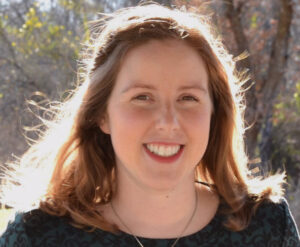 I can tell from the first page if I want to read on. I tag as I look through things: yes, no, further investigation needed. I am looking for specific stories now and specific writing qualities. If it is something I might be interested in, I give it three chapters. I need to be compelled in three chapters or I pass. After that, if I am still interested, I request. Once a full manuscript comes in, I read it with an eye for how much work it will need, and if I have a vision or feel compelled. I have perfectly lovely manuscripts that I pass on because I just didn’t find that passion. And passion drives the ship. When you are neck deep in 13 passes from editors, you want to feel that spark of joy that makes you say, “Screw this, I know I am right.”
I can tell from the first page if I want to read on. I tag as I look through things: yes, no, further investigation needed. I am looking for specific stories now and specific writing qualities. If it is something I might be interested in, I give it three chapters. I need to be compelled in three chapters or I pass. After that, if I am still interested, I request. Once a full manuscript comes in, I read it with an eye for how much work it will need, and if I have a vision or feel compelled. I have perfectly lovely manuscripts that I pass on because I just didn’t find that passion. And passion drives the ship. When you are neck deep in 13 passes from editors, you want to feel that spark of joy that makes you say, “Screw this, I know I am right.”
***
Don’t play to market. You are not writing for today, you are writing for tomorrow. Be inventive.
***
This business can be very disheartening. As an author, you take a lot of knocks. I take them, too. Don’t lose your joy. Remember why you wanted this in the first place.
Meredith Mundy, Editorial Director of Abrams Appleseed
Editors take projects they are excited about to an Editorial Meeting first—attended by all the other children’s book editors. If that group is enthusiastic about the proposal, then it goes to a second meeting called “Pub Board.” At that point, we have gathered up a list of comp titles, any relevant info about the author (including their sales tracks if one exists), and we have estimated costs to see what the financial picture might look like for each project. This meeting is attended by a lot of folks: our Sales, Sub Rights, Design, Digital, Finance, Executive, and Marketing & Publicity teams. It’s a tough crowd, as it should be! It costs a LOT of time and money to create each book, and we want to be sure that the whole company is 100% on board before we make an offer for publication. It’s so exciting when we DO get that green light and are able to make an offer!
***
It happens occasionally that an author will suggest an illustrator and that person gets chosen to work on the book, but the decision really lies with the art director, and more often than not, the AD will have a dozen other illustrator suggestions in the hopper to be considered. I am always amazed by the wonderful artists our designers and art directors come up with for projects I may have had very different visions for initially!
***
Always have several picture book ideas in your back pocket. Your first idea or manuscript may not be the one that inspires and delights an editor, but if there is interest in your tone or style or sense of humor, be ready to submit something new to see if it might hit the mark!
Monica Rodriguez, Agent at Context Literary Agency
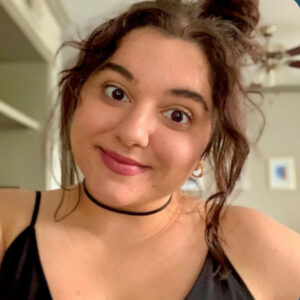 I think as writers we often forget how many plates agents have to spin and that most agents still need a day job to survive financially. Being on the other side of things helped me understand timing and what goes into deciding what projects to represent. While there are so many wonderful stories out there that I may fall in love with, there’s also an element of how I can make this book great and if I can sell it. Oftentimes, as writers we idolize the idea of getting an agent and forget that it is a business partnership as well. The reason why it takes so long for agents to get back to writers right away is because clients come first and it takes time to read, to make sure the project will be the right partnership. That being said, I wish I knew how much went into agenting before I started querying because now a rejection isn’t something I worry about and I understand if it takes long, it actually might be a good thing. It’s all about patience, right timing and working on your craft in the meantime.
I think as writers we often forget how many plates agents have to spin and that most agents still need a day job to survive financially. Being on the other side of things helped me understand timing and what goes into deciding what projects to represent. While there are so many wonderful stories out there that I may fall in love with, there’s also an element of how I can make this book great and if I can sell it. Oftentimes, as writers we idolize the idea of getting an agent and forget that it is a business partnership as well. The reason why it takes so long for agents to get back to writers right away is because clients come first and it takes time to read, to make sure the project will be the right partnership. That being said, I wish I knew how much went into agenting before I started querying because now a rejection isn’t something I worry about and I understand if it takes long, it actually might be a good thing. It’s all about patience, right timing and working on your craft in the meantime.
Jennifer Rofé, Senior Agent at Andrea Brown Literary Agency
 A big part of this process for me is trying to make sure that the surface story and takeaway are strong enough to catch an editor’s attention and enable them to see the bigger picture. I’m not an editor in the way that your editor, Frances Gilbert, is and she will definitely make Bad Dog [the interviewer’s book] an even stronger, more focused, and nuanced story. But I want to be sure that a new project is as strong as the client and I can possibly
A big part of this process for me is trying to make sure that the surface story and takeaway are strong enough to catch an editor’s attention and enable them to see the bigger picture. I’m not an editor in the way that your editor, Frances Gilbert, is and she will definitely make Bad Dog [the interviewer’s book] an even stronger, more focused, and nuanced story. But I want to be sure that a new project is as strong as the client and I can possibly  make it in order to usher it forward to an editor. Another part of this process is identifying a client’s writing or illustrating tics. For example, if I may put you on the spot – one of your tics is the way you initially draw a character’s nose or mouth, so I point it out to you and encourage you to try something different. For other illustrators, it might be a specific composition that they regularly rely on. For authors, it might be word choices or story structures. A trickier part of this process is identifying if a new project is living up to a client’s potential. Is this at least as strong as their last work? Is this even stronger and representative of new heights for a client?
make it in order to usher it forward to an editor. Another part of this process is identifying a client’s writing or illustrating tics. For example, if I may put you on the spot – one of your tics is the way you initially draw a character’s nose or mouth, so I point it out to you and encourage you to try something different. For other illustrators, it might be a specific composition that they regularly rely on. For authors, it might be word choices or story structures. A trickier part of this process is identifying if a new project is living up to a client’s potential. Is this at least as strong as their last work? Is this even stronger and representative of new heights for a client?
***
[if a project doesn’t get acquired]Then we reevaluate. Responses from editors can help us see a flaw that we didn’t notice and we might revise from there. Or perhaps we find that the market isn’t interested in this project right now, so we shelve it – for the time being or for always. Or perhaps it’s a matter of finding the editor who connects deeply with the project. Or perhaps it’s timing – the project isn’t working right now, but in a handful of months or even a year, it has a better chance of working (for a variety of factors). Sometimes a project I think will be a hard sell can sell quickly. Sometimes a project I think is a slam dunk, won’t sell at all.
And sometimes, responses from editors will prove that you should have listened to your agent.


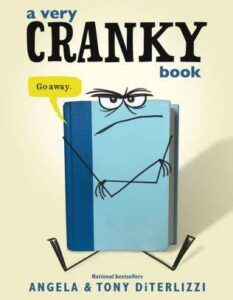
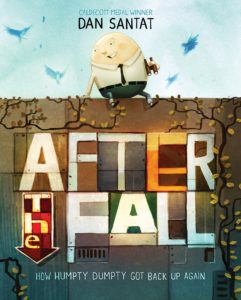
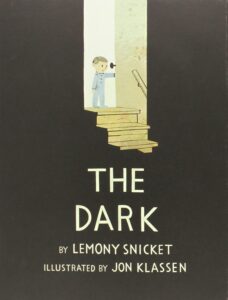
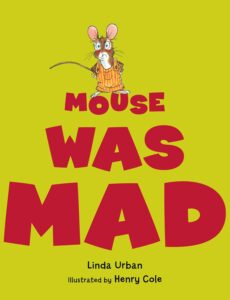
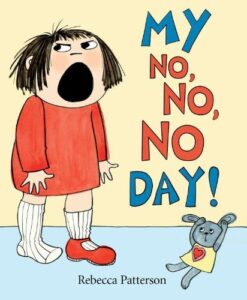
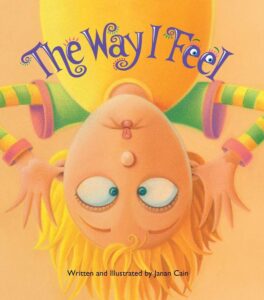
 This month’s Author Interview is with Canadian writer Deborah Kerbel. To make her feel at home, I’ll be using the Canadian spellings throughout (colour, etc.). Fun, right?
This month’s Author Interview is with Canadian writer Deborah Kerbel. To make her feel at home, I’ll be using the Canadian spellings throughout (colour, etc.). Fun, right?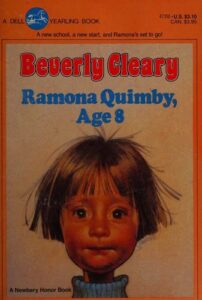
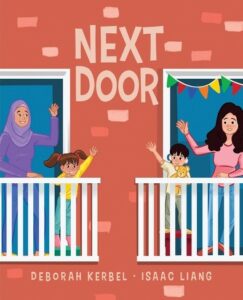
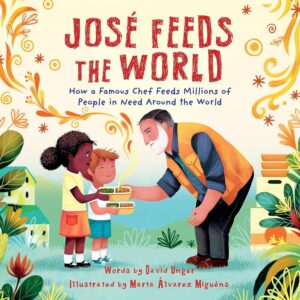
 David C. Gardner is an award-winning illustrator and visual development artist. A former artist for Walt Disney Animation Studios, he has illustrated numerous picture books, including
David C. Gardner is an award-winning illustrator and visual development artist. A former artist for Walt Disney Animation Studios, he has illustrated numerous picture books, including